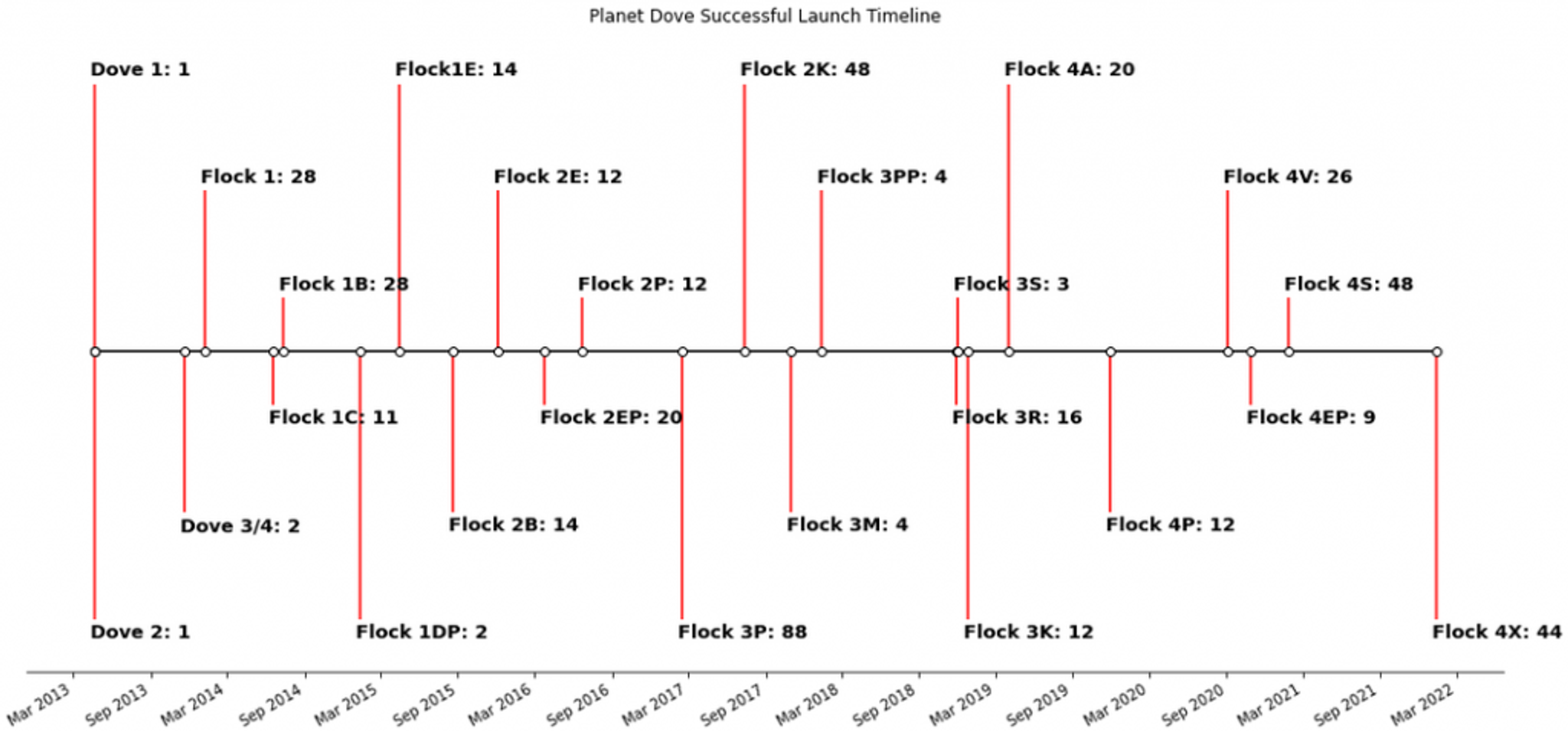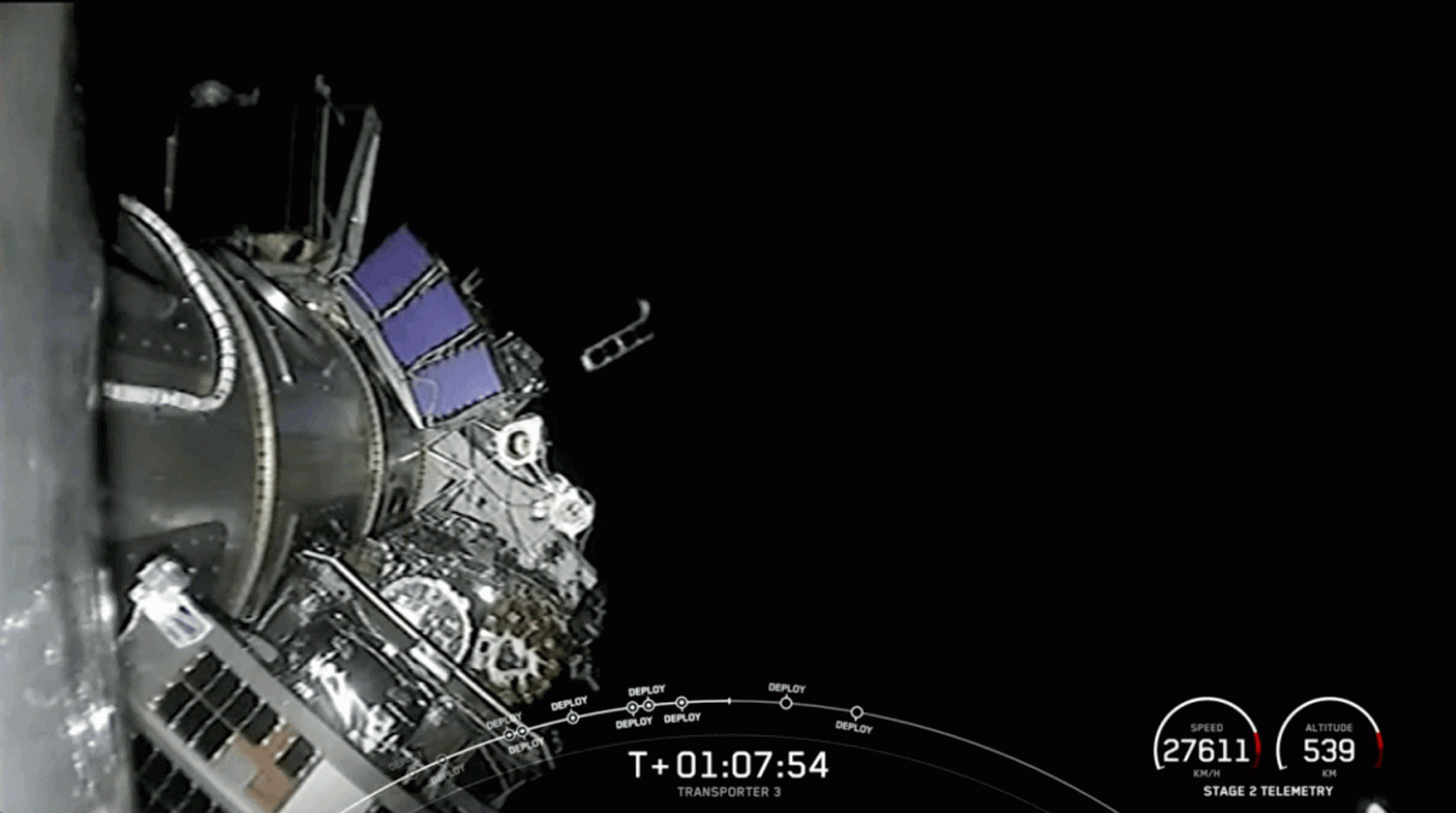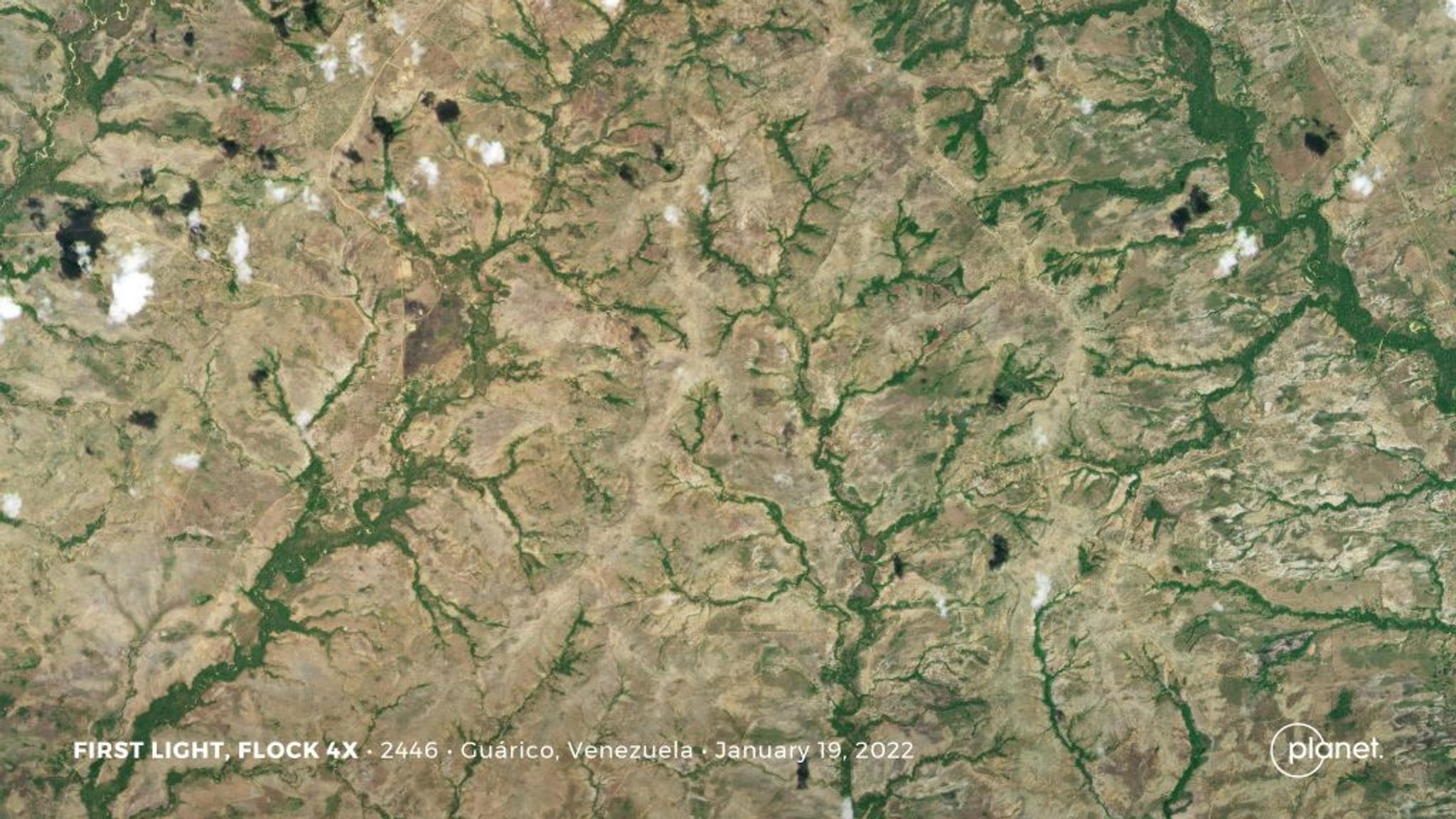So You Launched a Satellite… Now What?

First light from one of Planet’s latest SuperDoves launched last week. © 2022, Planet Labs PBC. All Rights Reserved.
StoriesJust over a week ago, we launched 44 of our latest SuperDoves to orbit on a SpaceX Falcon 9 Rocket. A successful rocket launch is a feat in and of itself and requires months of coordination from our Manufacturing Team to build, test, tinker with, and ship our hardware to the launch site (more on our manufacturing process here), but that’s not where the job ends. Once in space, the satellites have to be commissioned and begin collecting valuable Earth data. This is where Planet’s Operations’ teams come in. Once in orbit, the team is responsible for making first contact with our satellites that are now hurtling around Earth at 7.6km/s. To date, Planet’s Mission Ops team has made contact with 100% of our Dove satellites launched - 479 satellites in total! Here’s a peek into how it’s done.

Planet’s successful Dove satellite launches to date. Credit: Planet
The first step is to make first contact with each satellite. This is done by using our Global Ground Station network, currently 48 ground stations across 11 countries, which receive ranging data, send commands and receive telemetry from each satellite. This is when the Mission Operations team first assesses the health of the satellite: how full are the batteries, how fast is it spinning, are the temperature and power readings as expected? With ranging data, the Orbits team can also begin to estimate their initial orbits and how it may differ from pre-launch predictions.
Once we know where a satellite is, have contact with it, and determine that it’s healthy, we can then use the Earth’s magnetic field, and our Attitude Control System (ACS) components, magnetorquers, to detumble the satellite, slowing its spin. Once slow enough, Reaction Wheels (think fidget spinners in space) are used to maintain 3 Axis Control.

A Planet SuperDove being deployed from a SpaceX Falcon 9 rocket on January 13, 2022. Credit: Planet
With the satellite stabilized, the solar array panels can be deployed. Once deployed, they’re used to generate enough power to operate our high speed radios and imaging system. With the high speed radios operational, we can perform software updates, like updating everything from the flight software to the camera compression software with the latest production versions. We then calibrate the ACS system, which entails a variety of calibration sub-steps and capturing imagery data to iterate to a stable solution.

Initial steps taken in our commissioning process. Credit: Planet
All of these steps are done via automation workflows designed and iterated through our many launches. These automations are built on top of our multi-mission, in-house, cloud-based Mission Control. These workflows are monitored and assessed by our distributed, follow-the-sun operations teams. The hard work put in across all of these groups has resulted in a systematic pipeline that can rapidly proceed through SuperDove commissioning; regardless of the launch size. As of today, all 44 of our new satellites are healthy, with the majority through bus commissioning, and many have already started capturing imagery. They’ll now go on to join the rest of our fleet of over 200 satellites delivering reliable daily data to customers around the world.
With that, here’s a first look at some of those first images captured.

First light from one of Planet’s latest SuperDoves launched on January 13, 2022 © 2022, Planet Labs PBC. All Rights Reserved.

First light from one of Planet’s latest SuperDoves launched on January 13, 2022 © 2022, Planet Labs PBC. All Rights Reserved.

First light from one of Planet’s latest SuperDoves launched on January 13, 2022 © 2022, Planet Labs PBC. All Rights Reserved.

Ready to Get Started
Connect with a member of our Sales team. We'll help you find the right products and pricing for your needs

